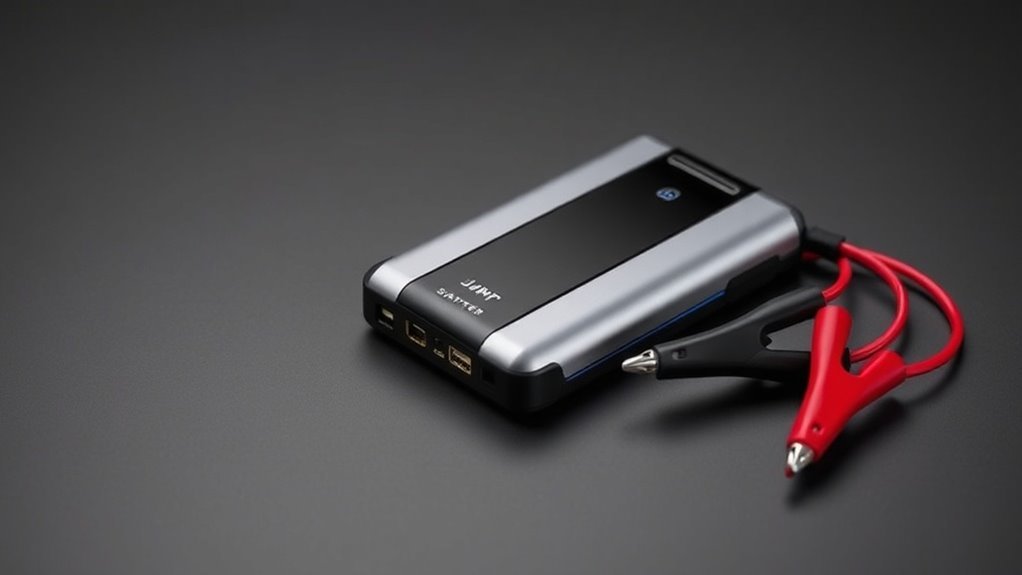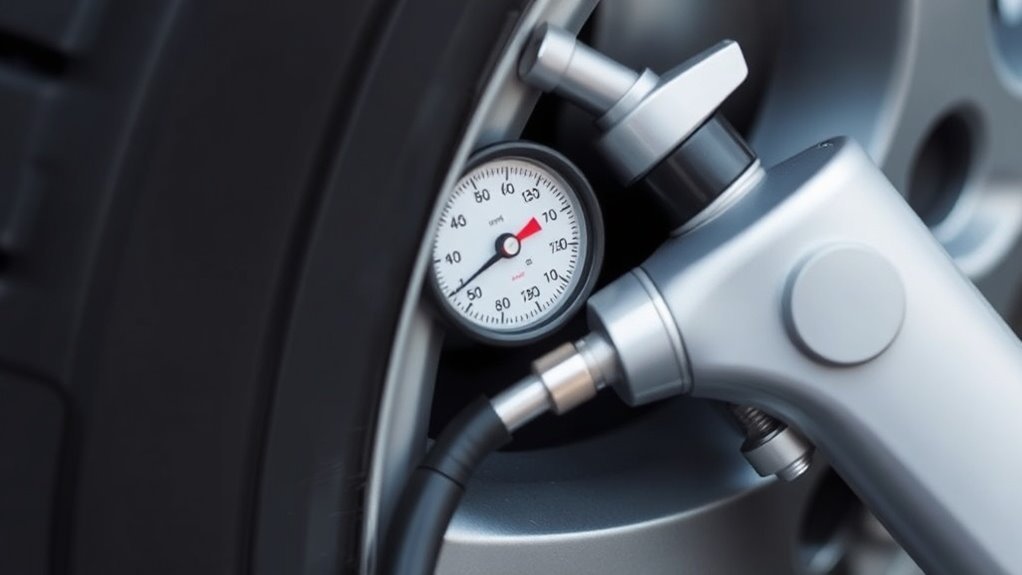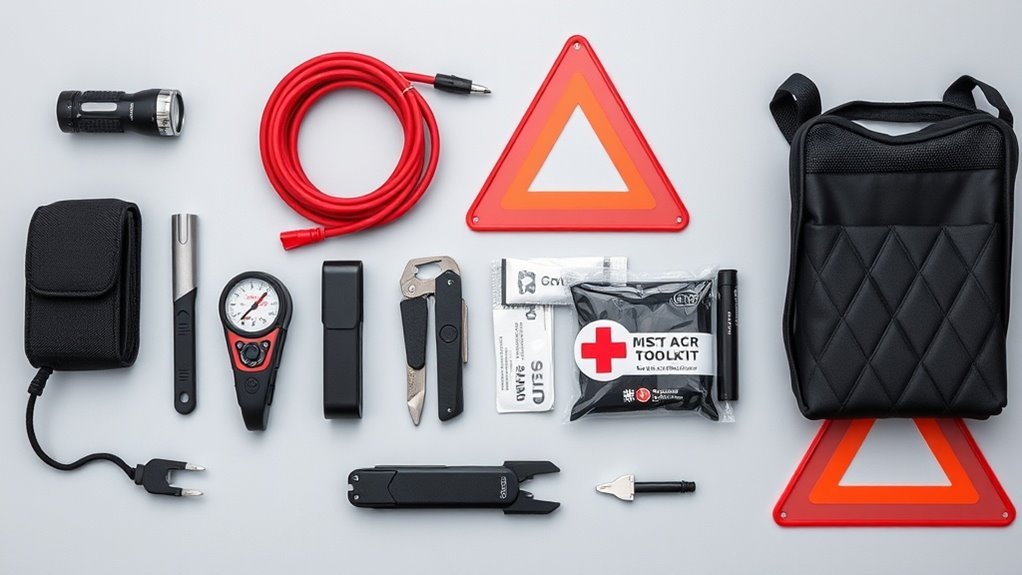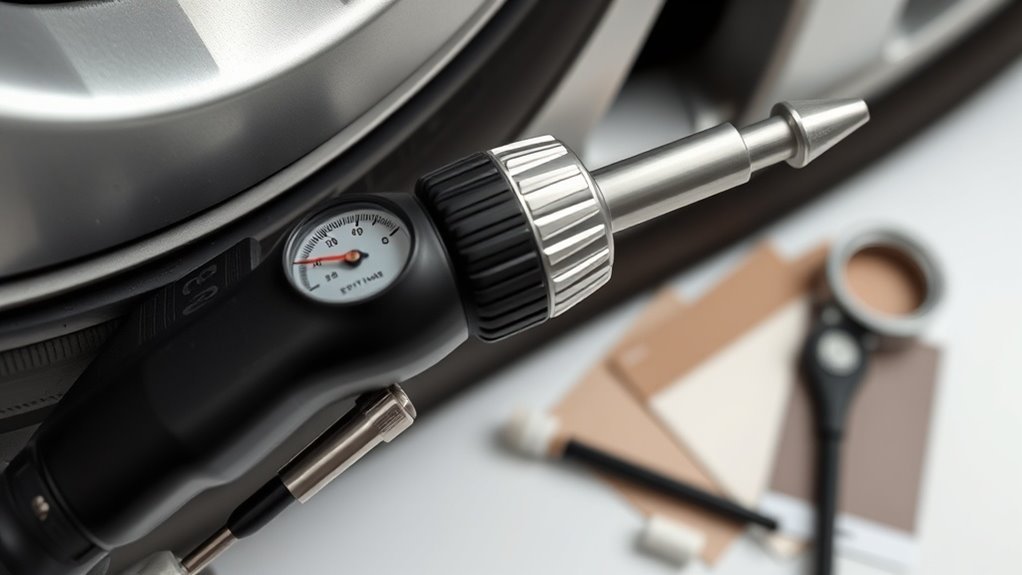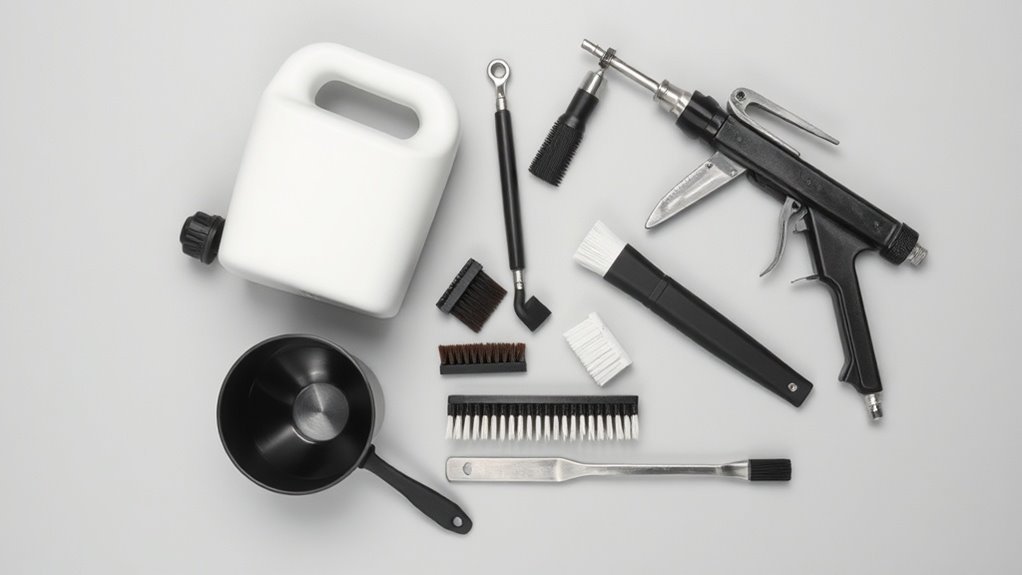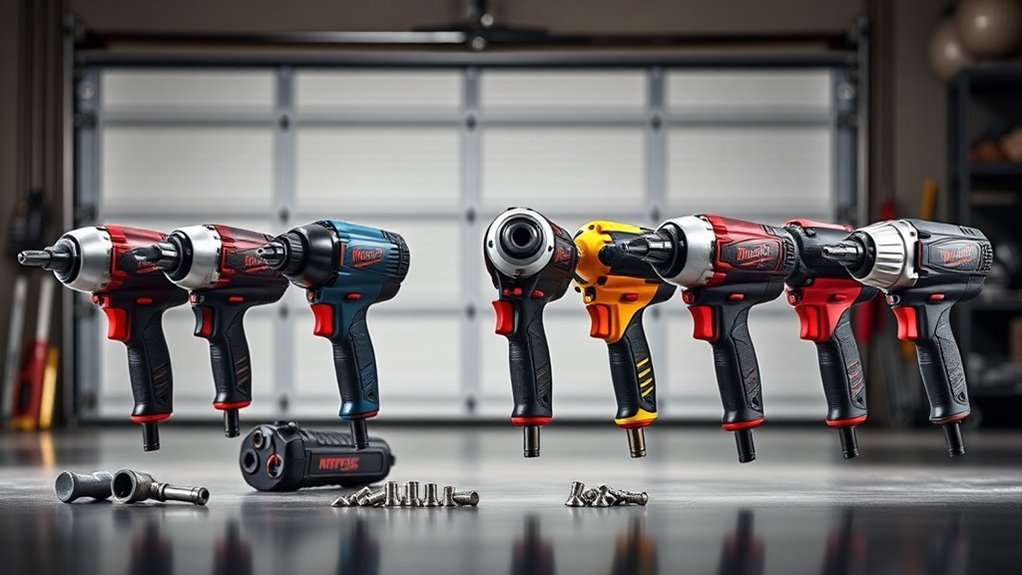Heat and Cold: Impact on Car Tools and Accessories
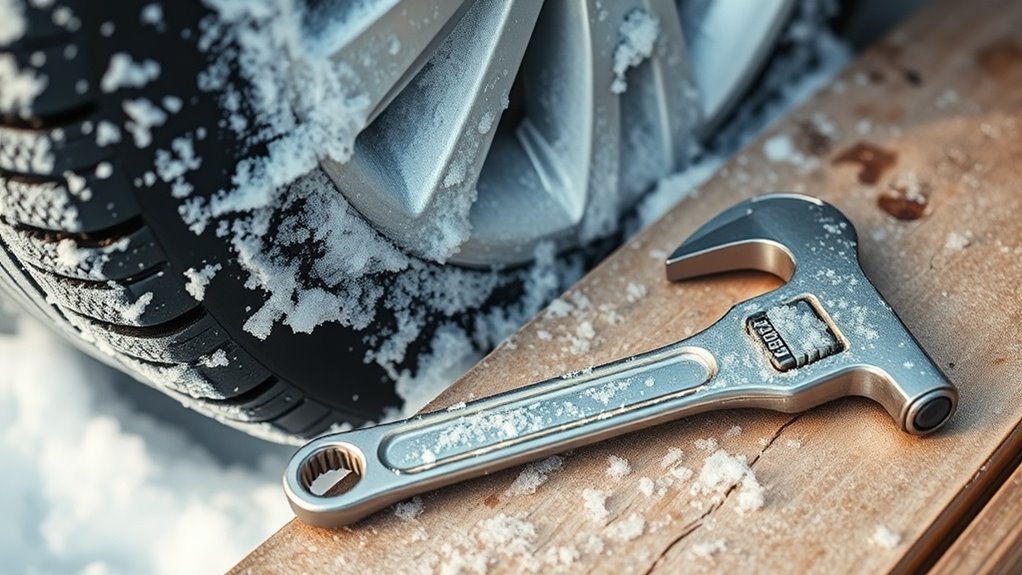
Extreme temperatures can seriously affect your car tools and accessories. Heat may cause dashboard warping, battery corrosion, and damage to rubber parts, while cold can make metal brittle and thickens lubricants, increasing wear. Battery-operated tools struggle in extreme conditions, and electronic components can fail. To keep everything in top shape, proper storage and regular maintenance are essential. Discover some practical tips for protecting your tools and accessories from these harsh environments.
Key Takeaways
- Extreme heat can warp dashboard materials and accelerate corrosion on batteries, impacting car functionality.
- Cold temperatures can make metal tools brittle and thickens lubricants, reducing their effectiveness.
- Parking in shaded areas and using sunshades can minimize heat exposure and protect interior components.
- Regular inspections for tools and accessories in varying climates prevent costly damages and repairs.
- Essential winter accessories, like scrapers and de-icers, enhance safety and visibility in cold weather conditions.
How Extreme Temperatures Affect Tool Performance
Have you ever wondered how extreme temperatures affect the tools you rely on for car maintenance? When it gets too hot or too cold, your tools can suffer, impacting their performance.
For instance, metal tools may expand or contract, causing misalignment and difficulty in operation. Cold weather can make lubricants thick and sluggish, leading to increased friction and wear.
On the flip side, extreme heat can cause some materials to weaken or become brittle, risking breakage during critical tasks. Additionally, battery-operated tools can lose efficiency in harsh temperatures, reducing their run time when you need them the most.
Extreme heat may weaken materials and diminish battery efficiency, risking tool performance when you need it most.
It’s crucial to store your tools properly and check their condition regularly, ensuring they’re ready for action, no matter the weather.
The Impact of Heat on Car Accessories
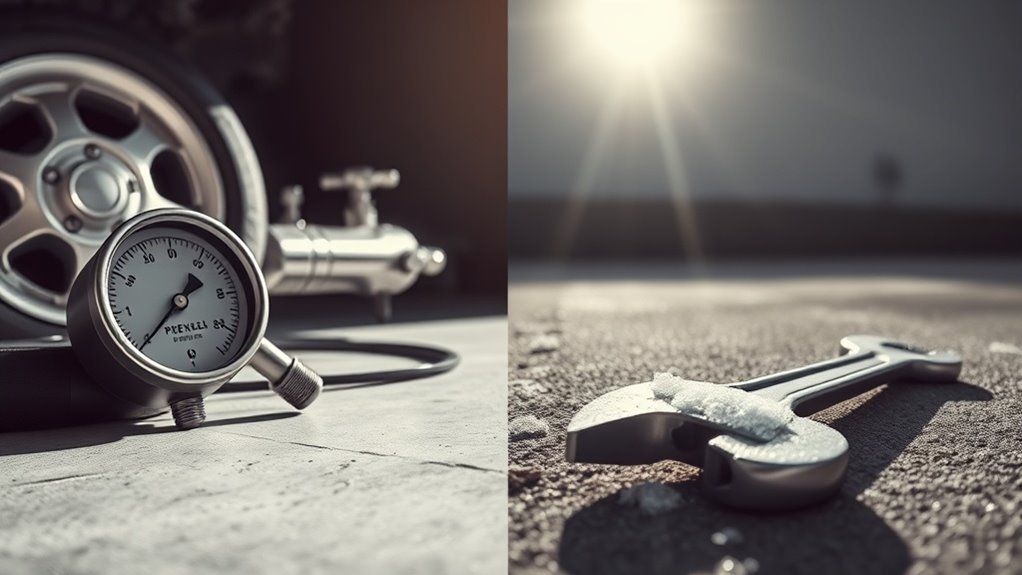
While you mightn’t think about it often, extreme heat can substantially affect your car accessories, leading to potential issues.
For example, dashboard materials can warp or fade, leaving unsightly marks and reducing visibility. Your car’s battery might also suffer; high temperatures can accelerate corrosion, shortening its lifespan.
Additionally, rubber components like hoses and gaskets can become brittle, resulting in leaks and costly repairs. If you’ve got electronic accessories, excessive heat can damage circuits and reduce functionality.
It’s vital to park in shaded areas or use sunshades to minimize heat exposure. Protecting these components not only enhances your driving experience but also helps maintain your vehicle’s value in the long run.
Don’t underestimate the impact heat can have on your car accessories!
The Detrimental Effects of Cold on Tools

As temperatures drop, you mightn’t realize that cold can be just as detrimental to your car tools as heat.
Metal tools can become brittle in low temperatures, making them more prone to breakage when you use them.
In cold temperatures, metal tools can become brittle, increasing the risk of breakage during use.
Lubricants can thicken or even freeze, which means they won’t work effectively, resulting in increased wear and tear.
Battery performance can also take a hit; you might find your cordless tools losing charge faster or not functioning at all.
Additionally, plastics can become rigid and show signs of cracking.
If you don’t pay attention, the cold could lead to costly replacements or repairs.
It’s essential to take into account how chilling conditions can negatively impact the longevity and efficiency of your essential car tools.
Best Practices for Storing Tools in Varying Climates
Storing your tools properly can make all the difference when dealing with extreme temperatures.
If you live in a hot climate, keep your tools in a cool, dry place, away from direct sunlight. Heat can warp or weaken materials, reducing their lifespan.
In colder climates, consider insulating your storage area to prevent moisture buildup that can lead to rust. Metal tools should be wiped with a light oil to protect against corrosion.
It’s also essential to store items off the ground, using shelves or hooks, to avoid contact with freezing surfaces.
Finally, regularly inspect your tools for signs of damage or wear, ensuring they’re always in excellent condition for use, no matter the weather. Implementing proper storage containers can further enhance the safety and longevity of your tools.
Essential Accessories for Extreme Weather Conditions
When you’re maneuvering through extreme weather conditions, having the right accessories can make a significant difference in your car’s performance and your safety. Start with a reliable windshield scraper and de-icer for winter; this guarantees clear visibility.
In contrast, during scorching summers, a sunshade can protect your interior and prevent overheating.
Pack a sturdy emergency kit, complete with a flashlight, first aid supplies, and non-perishable snacks, just in case you get stranded.
Additionally, invest in all-weather floor mats to safeguard against mud, snow, and rain.
Finally, keep a portable phone charger handy; it guarantees you stay connected in emergencies.
These essentials help you tackle harsh elements confidently and keep you prepared for whatever Mother Nature throws your way.
Questions
How Can I Tell if Tools Are Damaged by Temperature Extremes?
You can tell if tools are damaged by temperature extremes by inspecting for cracks, warping, or discoloration. Also, check functionality—if they don’t operate smoothly or efficiently, they might be compromised.
Are Certain Tools More Resistant to Heat or Cold?
Some tools, like those made from titanium or high-grade steel, can withstand extreme temperatures better than others. You should look for these materials to guarantee your gear stands strong, like the unwavering hero in a classic tale.
What Materials Are Best for Extreme Weather Tools?
For extreme weather tools, you’ll want materials like rubber, stainless steel, and high-grade plastics. These materials withstand temperature fluctuations, ensuring durability and reliability, keeping your tools functional when you need them most, regardless of the weather.
Can Temperature Changes Affect Tool Warranties?
Temperature changes can definitely affect tool warranties. If you expose tools to extreme conditions, manufacturers might not cover damages caused by weather extremes. It’s a bitter pill to swallow when warranties don’t protect your investment.
How Often Should I Check Tools in Extreme Temperatures?
You should check your tools at least once a month in extreme temperatures. Regular inspections help identify any potential damage or wear, ensuring that they remain reliable and effective when you need them most.
Conclusion
In a world where extreme temperatures are out to get your tools, it’s essential to stay one step ahead! Whether it’s summer heat that’s turning your wrenches into soggy noodles or winter’s frigid grasp freezing your tires in place, you can’t afford to ignore their needs. By storing your tools like prized possessions and arming yourself with the right accessories, you’ll conquer any climate. Don’t let heat and cold run the show—take control and keep your tools performing like champions!

